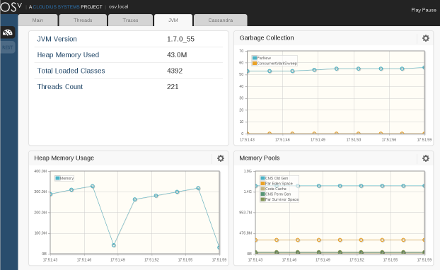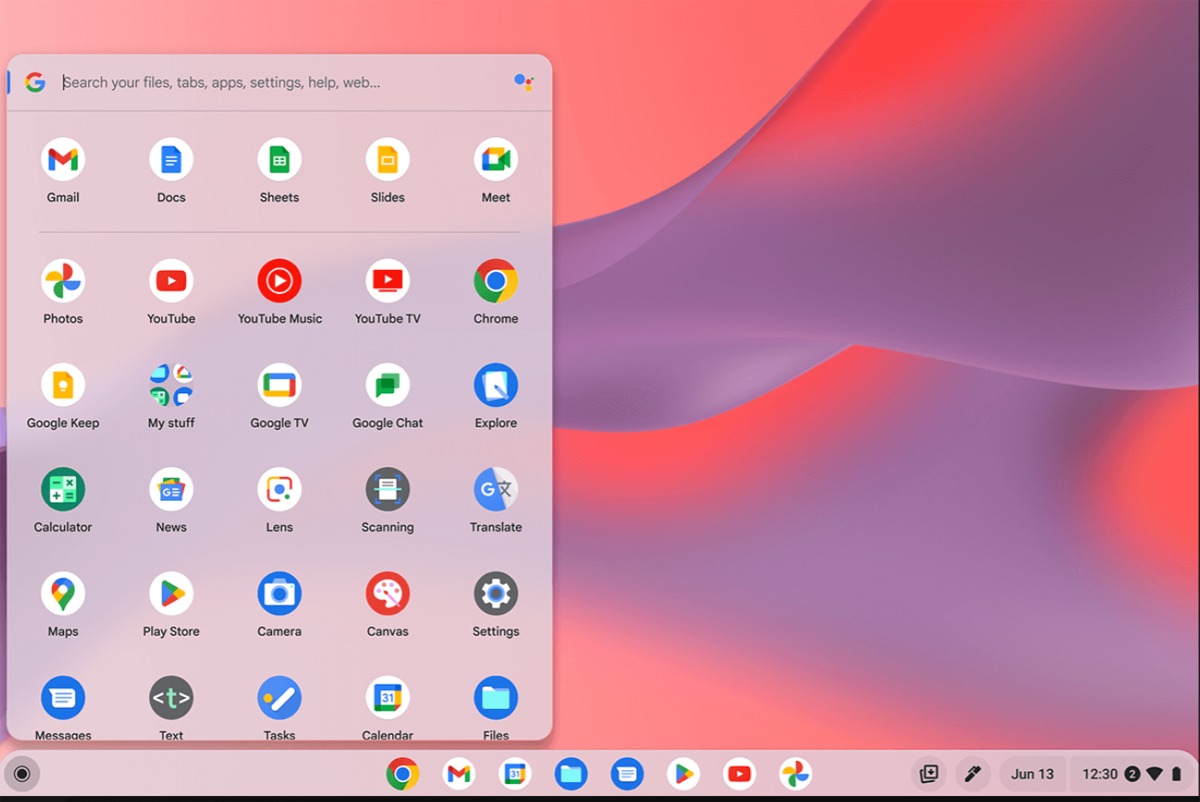

Abstract digital technology operating system background.
A web OS provides an accessible, secure collaboration option with low system demand. Here’s how they work, and how to pick the best one for your use case.


An operating system (OS) is software that manages a computer’s hardware and software resources, enabling users to interact with the computer, manage systems files, install software, and execute programs.
A web operating system (also known as a webtop or dummy OS) is an internet-based user interface that enables users to access and use various applications and services through the cloud without installing software on their local computers.
Web OSs provide users many features and capabilities, including file storage and management, online collaboration tools, email, media playback, and productivity applications. With these OSs, users can perform various tasks, such as creating documents, editing images, and accessing files. They also typically support multi-user access, allowing multiple users to collaborate on the same documents and projects in real time.
Here are our picks for the top web and internet OS software:
| Best for | Browser support | Offline functions | Notable apps | Starting price | |
|---|---|---|---|---|---|
| SilveOS | Ease of use | Yes | No | Calculator, Map, Word Processing | Free |
| OSv | Virtual machines | Yes | No | Apps written in Java, C, Ruby, and more | Free |
| ChromeOS | Enterprises, Chromebooks | Yes | Yes | Gmail, YouTube, Play Store | Free |
| Xcerion | Developers and cloud storage | Yes | Yes | Calendar, Contacts, Notes | Free (premium options available) |
| LucidLink | Remote Teams | Yes | Yes | CAD/CAM models | $20 per TB per month |
Jump to:

Best for: Ease of use
SilveOS is a web-based OS that runs directly in a web browser. It’s based on Silverlight technology, a web application framework developed by Microsoft.
All you need to do is log in to the website on your device browser, and you can access applications and functions such as a file manager, calculator, YouTube, web browser, and media player.

SilveOS has a Windows-like user interface, as it’s meant to provide a familiar and easy-to-use interface for users familiar with the Windows OS. The SilveOS desktop environment features a taskbar, start menu, and desktop icons, all typical Windows desktop elements.
SilveOS was initially released in May 2008 as Windows4all.com; in November of the same year, it was renamed SilveOS (SilverLight Operating System).
SilveOS is free to use.

Best for: Virtual machines
OSv is a cloud-optimized OS developed by Cloudius Systems (now ScyllaDB). It’s an open source modular unikernel built to run a single unmodified Linux application as a microVM on top of a hypervisor. Its modular architecture enables users to select and include only the components necessary for their specific applications, which can help reduce its footprint and improve performance.

One of the key features of OSv is its ability to run Java applications natively without requiring a full Java Virtual Machine (JVM). This is accomplished through a custom runtime environment called Capstan.
OSv is a free and open source tool. Users can download OSv and run it locally or in the cloud via Amazon EC2 (elastic compute cloud) or Google Compute Engine (GCE).

Best for: Enterprises and dedicated Chromebooks
ChromeOS is a Linux-based, lightweight, web-based OS developed by Google on its open-source Chromium OS platform. It’s designed to work primarily with web apps and Chromebooks. It’s built around the Google Chrome web browser, uses the web browser as its primary interface, and is designed to provide users with a simple, secure, and fast computing experience.
ChromeOS comes preinstalled on Chromebooks, but it’s also available as the web-based ChromeOS Flex for Windows and Mac PCs.

ChromeOS is optimized for the web, with most apps and documents in the cloud. It also includes integrated media players, file managers, and access to the Google Play Store for downloading Android apps.
ChromeOS (including ChromeOS Flex) is a free, open-source OS.

Best for: Developers and file storage
Xcerion is a Swedish software company founded in 2001 by Daniel Arthursson. Xcerion’s CloudTop is a virtual desktop web OS that provides users with an online computer you can access from anywhere with an internet connection. To use CloudTop, users must create a free account with CloudMe, another Xcerion product that provides secure cloud storage for files and media.
Xcerion currently operates as a holding company for its cloud computing products. The company offers various services, such as cloud storage via CloudMe, database-as-a-service in the cloud via CloudBackend, and an edge application platform via its XML Internet OS (XIOS/3) for developers to build web apps.
Xcerion is also known for being the inventor of MyCloud and iCloud. iCloud was sold to Apple in 2011.
Users can sign up and use some Xcerion products for free. However, CloudMe also offers premium versions for additional storage. The premium plans have sub-plans in two editions, Consumer and Business. Both offer monthly or yearly subscription models.
Here are the full details of CloudMe’s pricing plans:
| Max storage | Max file size | Cost per month | Cost per year | |
|---|---|---|---|---|
| Free Plan | 3GB | 150MB | Free | Free |
| Start Plan | 25GB | Unlimited | €4 | €40 |
| Small Plan | 100GB | Unlimited | €8 | €80 |
| Standard Plan | 200GB | Unlimited | €14 | €140 |
| Large Plan | 500GB | Unlimited | €30 | €300 |
| Max storage | Max file size | Add’l users (100GB/ea.) | Cost per month | Cost per year | |
|---|---|---|---|---|---|
| Team Plan | 1TB | 2GB | 5 | €149 | €1,490 |
| Business Plan | 2TB | 2GB | 15 | €279 | €2,790 |
| Enterprise Plan | 5TB | 2GB | 50 | €759 | €7,590 |

Best for: Remote teams
Though not technically a web OS, LucidLink provides some of the same advantages by letting creative and remote teams access, share, and collaborate on projects in real time without downloading and syncing media locally. Companies can buy filespace on the cloud and assign secure access to their teams across the world.

LucidLink provides a unified, secure and fast cloud storage experience that works across all major cloud providers, including AWS, Azure, IBM, and GCP.
LucidLink has three plans. Each plan provides access for up to 5 users; additional users can be added for $10 per user per month.
LucidLink also offers a 14-day free trial of its services.
Some essential features of web and internet OS software that prospective buyers should consider when deciding on a solution include browser and app compatibility, offline functionality, cloud storage integration, and collaboration tools.
Web and internet OS software usually work across multiple web browsers, such as Google Chrome, Mozilla Firefox, Microsoft Edge, and Safari. This allows users to access the software from their preferred browser without compatibility issues. Check the list of supported browsers before selecting a tool to ensure it works on the user’s preferred browser.
Although web and internet OS software is primarily designed to work online, some software may offer offline functionality. This means that users can access and edit their documents and files without an internet connection. This feature is helpful for users who frequently work in areas with limited or no internet connectivity.
Generally, web OS software offers a suite of applications, such as word processors, spreadsheets, calendars, and email clients. Some software may also provide additional applications, such as graphics editors, project management tools, and video conferencing software. Ensure your desired software supports the applications your organization and teams need to function properly.
If you need to save files, documents, or other information, shop for a tool that enables you to integrate with cloud storage services, such as Google Drive, OneDrive, and Dropbox. This allows users to store their files and documents online, making them easily accessible from any device with an internet connection.
Does your team need to collaborate on projects? If yes, consider a tool that allows real-time collaboration. Some tools offer messaging capability, real-time editing, commenting, and version history tracking, and some even allow users to work on the same document or file simultaneously.
Choosing the best web and internet OS software for your business depends on the needs of your particular industry and your company’s goals.
For example, if you are in the creative industry, LucidLink may be best for you, as it enables media, engineering, and even marketing teams to collaborate and share files easily. On the other hand, for developers and those looking to store large files in the cloud, Xcerion is a good option. And if you just need a quick, easy option to get to work without any fuss, SilveOS might be the best choice for you.
Ultimately, the best web OS software for your business depends on your specific needs and goals. Before making your final decision, conduct research, read reviews, apply for a product demo or free trial, and ask questions to ensure the software you choose best fits your business.
Most web and internet OS tools available over a decade ago have been discontinued. To provide the most up-to-date solutions for enterprise, we researched the latest products and services available, focusing on reliable ones with a proven track record of success.
We looked for features such as security, easy-to-use user interfaces, supported applications, and customizability, as well as customer reviews and industry reviews. We also considered the companies’ support and the solution’s affordability. After careful research and evaluation, we narrowed down the top options for specific use cases, then outlined the best web and internet OS software solutions based on the factors mentioned.


Aminu Abdullahi is an experienced B2B technology and finance writer and award-winning public speaker. He is the co-author of the e-book, The Ultimate Creativity Playbook, and has written for various publications, including eWEEK, Enterprise Networking Planet, Tech Republic, eSecurity Planet, CIO Insight, Enterprise Storage Forum, IT Business Edge, Webopedia, Software Pundit, and Geekflare.

Enterprise Networking Planet aims to educate and assist IT administrators in building strong network infrastructures for their enterprise companies. Enterprise Networking Planet contributors write about relevant and useful topics on the cutting edge of enterprise networking based on years of personal experience in the field.
Property of TechnologyAdvice. © 2025 TechnologyAdvice. All Rights Reserved
Advertiser Disclosure: Some of the products that appear on this site are from companies from which TechnologyAdvice receives compensation. This compensation may impact how and where products appear on this site including, for example, the order in which they appear. TechnologyAdvice does not include all companies or all types of products available in the marketplace.